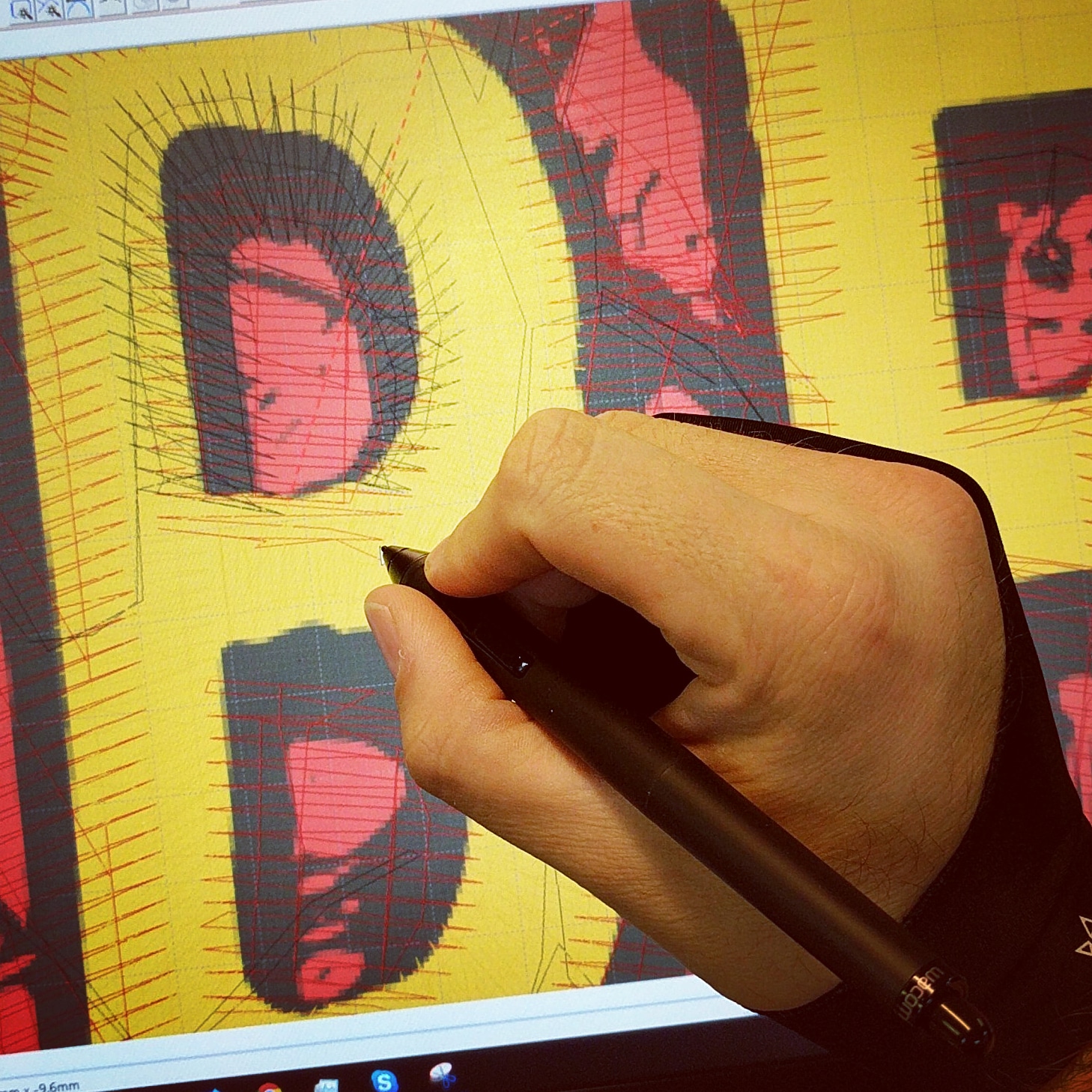Ideal Digitizing for Embroidery: Improve Your Tasks
Ideal Digitizing for Embroidery: Improve Your Tasks
Blog Article
Simplifying the Art of Embroidery Digitizing: Step-by-Step Overview
Needlework digitizing is a meticulous craft that demands accuracy and creative thinking. As innovation remains to advance, the digitization procedure has actually ended up being a lot more available, allowing fanatics to bring their complex styles to life easily. In this overview, we will certainly untangle the intricacies of needlework digitizing, breaking down each step methodically to streamline the procedure and encourage both newbies and experienced embroiderers alike. Stay tuned to discover how you can simplify this elaborate art form and transform your creative visions into perfectly stitched masterpieces.
Understanding Needlework Digitizing Software
Embroidery digitizing software program works as an important device for transforming complex layouts into digital layouts compatible with needlework devices, facilitating accurate sewing and customization. This specialized software program permits users to import different photo documents layouts, such as JPG or PNG, and transform them right into embroidery machine-readable styles like DST, EXP, or PES - Digitizing for Embroidery. By using features like stitch editing and enhancing, rug choices, and string shade selection, digitizing software makes it possible for individuals to control every aspect of the style procedure
Furthermore, advanced embroidery digitizing software program uses devices for developing intricate layouts, readjusting stitch density, and incorporating elaborate details. Users can also preview the style before sewing it out, making sure accuracy and minimizing mistakes. Additionally, lots of software application give automatic functions that aid improve the digitizing process, conserving effort and time.
Comprehending the abilities of needlework digitizing software application is vital for attaining top notch cause embroidery projects. By understanding this tool, needlework fanatics and professionals can unleash their creativity and bring intricate layouts to life with precision and effectiveness.

Selecting the Right Layout Data
After acquainting on your own with the capabilities of embroidery digitizing software program, the next critical action in the process is selecting the ideal design data for your job. Digitizing for Embroidery. When choosing a design declare embroidery digitizing, it's important to consider the complexity of the layout, the size of the end product, and the sort of textile you will be collaborating with
For elaborate designs with fine information, a high-resolution picture or vector data is recommended to ensure that the embroidery device can properly duplicate the design. Furthermore, the dimension of the end product plays a substantial function in selecting the right layout file. Larger layouts might require higher resolution documents to preserve quality and sharpness.
Moreover, the kind of textile you will certainly be embroidering on influences the option of design data. Various materials may need changes in the design data to ensure that the stitches are correctly aligned and the style looks like intended. By meticulously choosing the right design data based on these aspects, you can establish on your own up for an effective embroidery digitizing procedure.
Digitizing Devices and Methods
Using specialized software and accuracy strategies, digitizing devices are crucial in transforming detailed styles right into embroidery-ready data. Needlework digitizing software, such as Wilcom, Hatch, or Embrilliance, provides the essential platform to convert Visit Website art work into stitch data. These programs provide attributes like stitch editing and enhancing, have a peek at these guys padding alternatives, and text devices to make certain the layout translates perfectly onto textile.
One of the crucial techniques in digitizing is developing a clear path for the embroidery machine to follow. This involves digitizing each component of the design with precision, figuring out stitch kinds, densities, and directions. By using tools like digitizing tablets or software-specific plugins, embroiderers can attain a high degree of precision in their digitized styles.
Additionally, grasping the art of rug stitching is critical for creating quality embroidery. Underlay sewing supports the textile and creates a structure for the layout, ensuring that the last product is both aesthetically attractive and resilient. By recognizing these digitizing devices and strategies, embroiderers can raise their craft and bring elaborate designs to life with precision and performance.
Personalizing Stitch Kinds and Directions
The selection of stitch types can substantially impact the general appearance and texture of the embroidered design. By strategically combining these stitch types, embroiderers can accomplish deepness and dimension in their layouts.
Additionally, the direction of stitches plays a crucial duty in boosting the visual charm of the last embroidery. Varying stitch directions can include appearance, highlight certain components, and produce aesthetic read the article rate of interest. Transforming the angle of stitches can simulate activity or natural patterns like fur or feathers. By exploring with different stitch angles and patterns, embroiderers can bring their styles to life with remarkable detail and intricacy. Mastering the art of personalizing stitch types and directions equips embroiderers to release their creative thinking and raise the quality of their job.
Testing and Refining Your Digitized Design
To ensure the accuracy and high quality of your digitized layout, extensive screening and improvement are crucial actions in the needlework digitizing process. As soon as you have completed the digitization of your design, it is crucial to examine it before waging the real embroidery. Examining permits you to determine any prospective concerns such as string breaks, stitch density issues, or style distortions that might affect the outcome.

After screening, it is essential to fine-tune your digitized layout based upon the responses from the examination sew-out. This may involve tweaking sew settings, readjusting densities, or making modifications to the general design to achieve the preferred result. By repeating via testing and improvement, you can fine-tune your digitized layout to excellence prior to progressing with the actual embroidery process.
Conclusion
In verdict, mastering the art of embroidery digitizing requires an extensive understanding of the software, picking the appropriate style documents, utilizing digitizing devices and methods, personalizing stitch types and instructions, and screening and improving the digitized layout. By adhering to these actions, embroiderers can simplify the digitizing process and develop top quality stitched layouts with precision and effectiveness.
Report this page